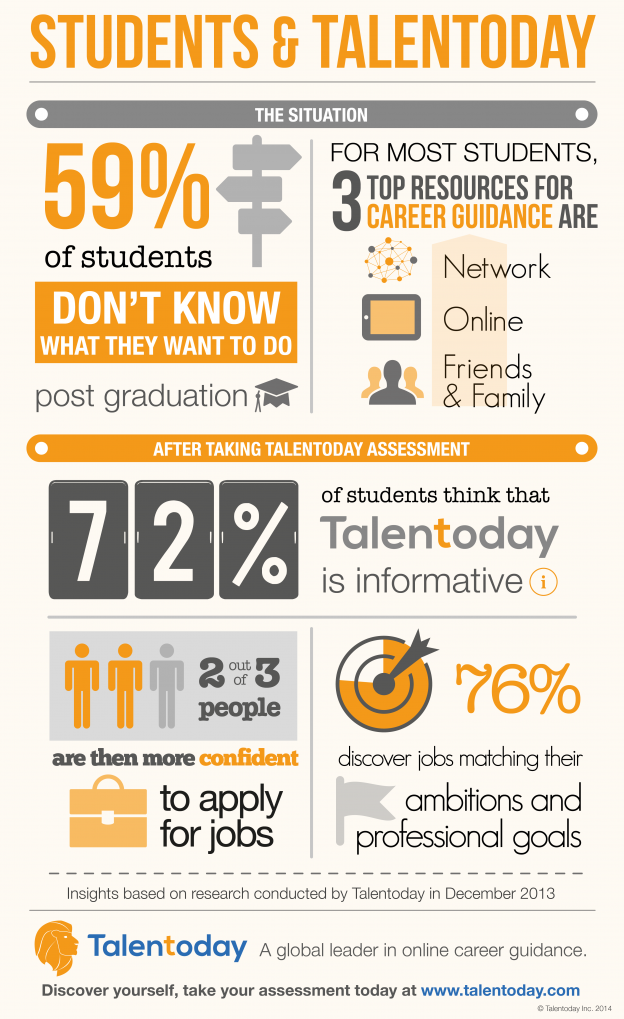Radio, Waves, Neuroscience… Do you Know What They Have in Common?

Today’s post deals with the relationship of strategy to human capital. Today, it is an inseparable pair whose interactions must be understood so that any adaptation, of individuals and organizations, to the new conditions of the working environment can be made in an optimal manner. Business models are changing, startups, however unstable, attract more young and dynamic executives, while large groups, large by their means, seem to fall off their pedestals*. If, at first glance, we realize, in dismay, that “the stability of an enterprise”, yet a dinosaur argument, is overcome by the dictatorship of the foosball, one wonders what will really motivate people to work in a company.
- Is it the technical skills?
- Is it the meaning of the missions?
- Is it the enrichment of individuals?
In other words, and to illustrate our point, we quote an excerpt from the book “Parallel Worlds” by Michio Kaku, American theoretical physicist and futurist.
“ All around you, there are hundreds of different radio waves being broadcast from distant stations. At any given instant, your office or car or living room is full of these radio waves. However, if you turn on a radio, you can listen to only one frequency at a time; these other frequencies have decohered and are no longer in phase with each other. Each station has a different energy, a different frequency. As a result, your radio can only be turned to one broadcast at a time.Likewise, in our universe we are “tuned” into the frequency that corresponds to physical reality. But there are an infinite number of parallel realities coexisting with us in the same room, although we cannot “tune into” them. Although these worlds are very much alike, each has a different energy. And because each world consists of trillions upon trillions of atoms, this means that the energy difference can be quite large. Since the frequency of these waves is proportional to their energy (by Planck’s law), this means that the waves of each world vibrate at different frequencies and cannot interact anymore. For all intents and purposes, the waves of these various worlds do not interact or influence each other.”
What about the neurosciences?
Neurosciences, and psychometry in particular, intervene to support this exercise of search and identification of “frequency” in the field of human capital management. A new way to rethink management. When psychometry sets foot in the company, in this place of authority, rules and processes, it is to bring intelligence and well-being to all those who are trying to escape by promoting the alignment of “frequency” of the individual with his work environment. And finally, it is also to bring more efficiency, competitiveness, to the organisation and ultimately results by almost drastically reversing the commitment of its employees. In conclusion, I invite you to discover your frequency. Take the test here for free or ask for a custom demo here!
MICHIO KAKU: Graduated from Harvard (B.sc.,1968) and Berkeley University (Ph.D.,1972). Engaged in work on the “theory of everything” seeking to unify the four fundamental forces of the universe. Among his books “ Physics of the Future: How Science will Shape Human Destiny and our Daily Lives by the Year 2100”.
* Only 9% of the employees in France say they feel engaged at work, Gallup 2013
What’s your management style? Infographic with women vs. men comparison
One day we may all be promoted to a management position. Experience and career advancement push us towards positions with more responsibilities, so what kind of managers will we be? Depending on our personalities, we will adopt different types of attitudes and behaviors.
A leader’s personality varies widely. In fact, there are as many different ways to manage people as there are people on earth. Management style is the result of the manager’s environment as well as his or her true character. In order to be most effective, the style must be adapted to each situation*. Adopting the same behavior for each situation could be a real problem for people leading teams and projects.
Paul Hersey and Kenneth Blanchard proposed a typology of 4 main management styles. To understand the different types, we need to take various factors into account, such as the natural tendency to lead of the people, or the manager’s ability to open up to other people’s ideas.
Let’s take a look at the four types introduced by Hersey and Blanchard, and how they can exist in the workplace:
- Autocratic Management: The manager makes decisions within the team, acting as an example for others. Especially in times of stress, employees may enjoy working with an autocratic leader. They may enjoy being told exactly what to do and having someone step up, take initiative, and take control of the situation. This management style can be especially effective when decisions are needed on an urgent basis, but can be somewhat stressful for some employees when the added pressure plays against them, hindering their performance and the overall atmosphere in the workplace.
- Paternalistic Management: The manager devotes time to pedagogy, taking the time to explain decisions and coach the team. In this style of management, the relationship between leaders and their employees is similar to the relationship between the head of a family and the members of the family. The manager in this sense is guiding and protecting his employees as if they are members of his own family. This approach can be difficult when used with senior professionals, who may not like their own interests looked after so attentively. Instead of gratitude, it may bring about resentment among senior-level employees, so may be a more successful style for use with entry-level employees who are in need of a more hands-on approach. The relationships between these coworkers and their leader are extremely solid.
Democratic Management: The manager encourages the participation of the team and includes their point of view in the final decision. This style is a very open way of organizing a team. Ideas are encouraged, and are openly discussed within the group. Everyone is encouraged to share their point of view. With situations of frequent change, this form of management allows for a great deal of flexibility in order to adapt and improve. Democratic management may bring out the best in a highly-experienced team, capitalizing on their skills, talents and experience, allowing them to share their views, rather than expecting employees to conform to one idea. This style may be inefficient in times of emergency or rush, as the decision-making process is longer. - Delegative Management: The manager leaves decisions up to the team, empowering others to develop and grow their ideas. This style is also known as laissez-faire or hands-off, as it empowers employees to strengthen their own management and personal leadership skills during the process. The leader assigns tasks to employees, while providing adequate support and resources to complete them, and the employees are responsible for each of their own projects. While the manager is still held responsible for the final product, this style expresses trust in employees, and allows the manager to be available to employees for feedback and growth. When the team needs too much reassurance or encouragement, the style might not be adapted, especially during stressful situations or with entry-level employees.
So, what’s your management style?
With data collected through Talentoday’s analytical tools, we developed the following infographic illustrating the preferred management styles of men and women around the world.
*The Situational Leadership Theory, Paul Hersey and Kenneth Blanchard (1967)
Learn more about Talentoday and take the scientifically designed assessment:www.talentoday.com
Feel Prepared Your Senior Year
It’s your senior year and you’re really not looking forward to going back to school. We know about having “senioritis.” We really understand it too! For this reason, we want to help with your transition from senior year to a new school. The Talentoday Team has come up with three tips to help you have a positive outlook towards filing applications to different colleges, looking for housing, and meeting new friends or classmates for the coming year.

Tip #1: Applying to colleges
Take a look at your strong points on your personality and motivations radar. Are you someone who is at ease in public? Or do you tend to be an independent and autonomous person? Research schools and programs where your personality and motivations will be satisfied and fulfilled. This way you’ll feel more confident applying to the programs at different schools. You shouldn’t have to drastically tailor yourself to programs; you should feel like you belong where you apply!
Tip #2: Looking for housing
For many of us, tuition fees are extremely high and cannot afford to live on our own. Because of this, we have to look for roommates. Compare your personality and motivations radar with potential roommates via your Talentoday profiles. Do you prefer to have an organized roommate? Or do you want to be roommates with someone who has similar motivations as you? Want to get to know your potential roommate at a more personal level? These types of questions can be answered by simply connecting and sharing profiles. You might just save yourself from a stressful quarter or semester with a roommate you do not get along with.
Tip #3: A-team for group projects
Attending a new school means you’ll meet new people. You may meet some who are studying the same thing as you or are part of other programs that your school offers. Either way, if you are assigned a group project, you will be interested in who you can count on for the completion of these. Who will be the leader, or the event organizer? Who can keep up with stressful situations and meet deadlines? By sharing your personality and motivations results with friends and classmates, you will be able to distinguish each person’s character and might be able to form a grade A-team.
Your personality and motivations radars reveal the real you. After you recognize your talents and motivations, you will feel more confident applying to the programs at different schools, as well as seek roommates and group mates that complement your qualities. So, put senioritis off to the side and take control over your skills and incentives. Invite your friends and classmates to take the Talentoday questionnaire, and compare your results with everyone to identify those whom you can successfully work with in the personal, academic and professional world.
What motivates students today?
“Crisis”, from the Greek krisis: the judgment. As the economic crisis hits countries around the world, new generations of potential executives of both Europe and the United States, in the twilight of their studies and at the dawn of their careers, face an additional attack. An identity crisis, a judgment whose verdict is hopeless, “whatever my education or my degree, I must be aware of the economic realities and adapt to the demands of the workplace.”
Prepared for the future, qualifications in-hand, and technical skills proven, young graduates must stand out in a global labor market. Their distinguishing factor above all… is their personality. From a company’s perspective, what differentiates two young MIT graduates both able to use Python programming language, if not the behaviors they will adopt in a job? Will they be team players? What is their motivation: variety of tasks or money?
Si vis pacem, para bellum “If you want peace, prepare for war.” More than ever, the university is a place for character development, the passageway to the adult world. It supports young people in defining their lifetime ambitions. We strive to provide tangible evidence in order to understand and support a university’s future talent. Know yourself to successfully sell yourself to an employer; know your motivations to choose your future career. Career guidance is the key! That’s why counseling professionals work hard to help students find their way and discover their talent…today!
Simple as 1, 2, 3–3 Steps to get started in your career search
The moment has come. In just a few months you will graduate and be ready to enter the workforce and be what they call a ‘responsible self-sufficient’ working adult. The future is in your hands. But where to start. You have your degree and for the last few years you have been focused on learning about things that interest you, training to achieve certain skills, meeting deadlines, getting good marks, and preparing yourself for graduation amongst other things.

The world of work can be quite a culture shock. And according to a study done by Talentoday over 59% of students don’t even know what they want to do. Career advisors know that graduating students that clearly understand not only their skills, but their personality and more importantly their motivation for work will be much more apt to find a job. A job that not only is a good fit but leads to better productivity and long term success within the company.
And employers recognize this. Recent research done by Forbes shows that 88% of employers are actually looking for cultural fit over skills and degree when hiring. So prospective employers want to know not only who you are and your general personality type but also what motivates and excites you about working for the company.
Getting started with some simple steps will not only help to steer you in the right direction but it will allow others to help guide you to the right career. So get started by:
1. Know thyself
Know who you are, clearly identify your skills, your personality type and what motivates you. Understand your strengths and weaknesses and the gaps that exist. Learn what types of jobs would be a good match for you based on your skills, personality and motivation. By taking the Talentoday simple online assessment you will be able to have a roadmap for your career search and to share with guidance counselors and advisors. This online career guidance assessment is free, it takes 11 minutes and will identify your assets, strengths and motivations getting you on the right path to a more fulfilling and successful career. Over 72% of students that took the assessment found it informative and useful in their career search.
2. Brand yourself
Build your online digital brand. All prospective employers will Google you before they interview you so make sure you are in control of what comes up. By building a comprehensive LinkedIn profile you will be able to showcase you, your degree, the role you are looking for and all your relevant professional history. And go deep on building your profile — include volunteer work, projects and any and all part time work to showcase who you are and what you have achieved. And not only does this help you find jobs but it helps the jobs find you. Companies are using social media to source and recruit talent like never before.
3. Network, network, network
According to a report from ABC News, 80% of today’s jobs are landed through networking. And in fact through the course of my career — I rarely have hired someone that didn’t come as a referral from someone somewhere. Leverage your family, your friends, your professors, your guidance counselors, and your local associations to learn from them and get introductions to people. Always remember to pay it forward and share in helping others network too.
So get started today — its as easy as 1, 2, 3 — take the Talentoday assessment, set up your LinkedIn profile and schedule your first networking coffee. And let me know how it goes.




